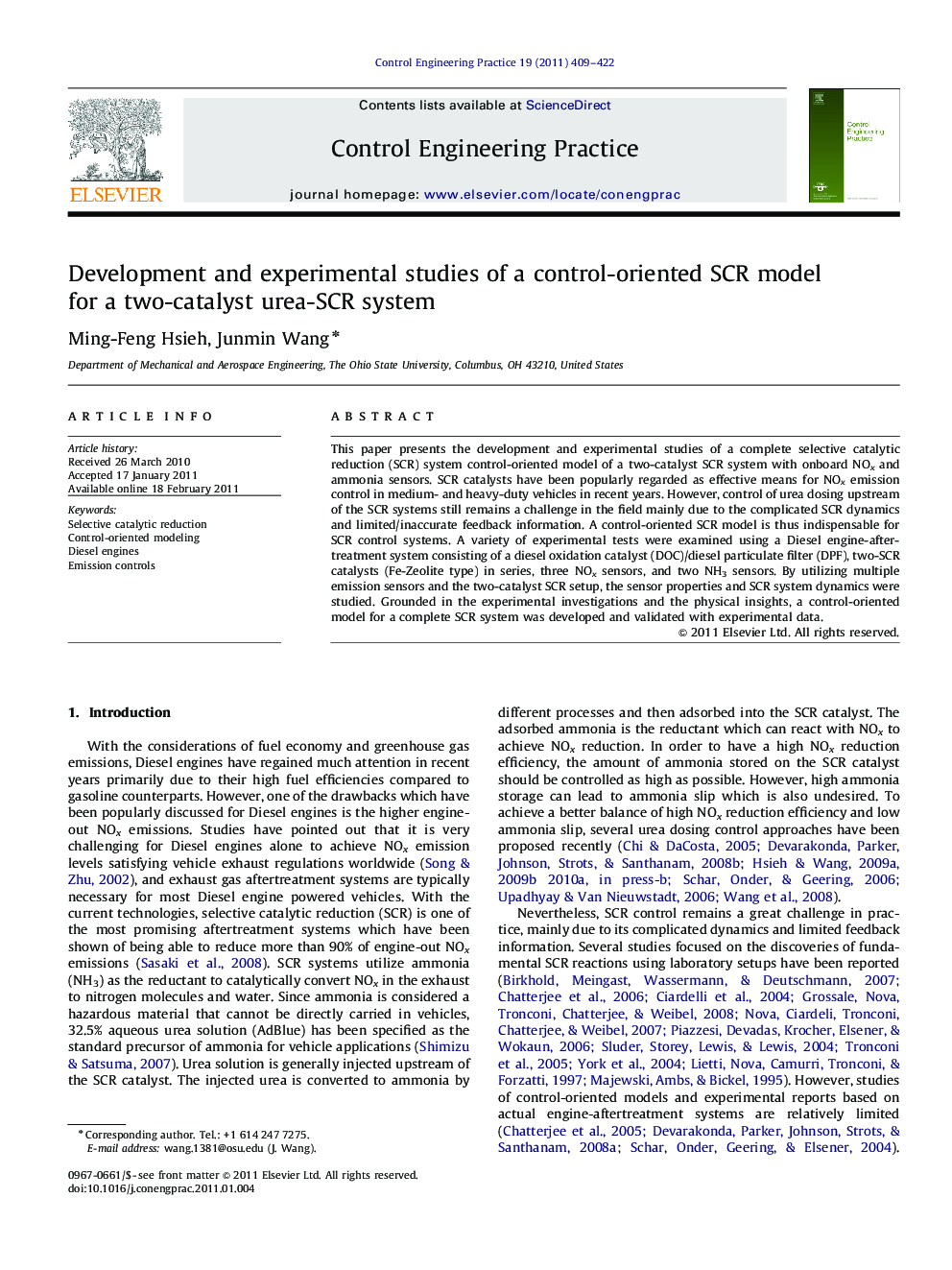| Article ID | Journal | Published Year | Pages | File Type |
|---|---|---|---|---|
| 699187 | Control Engineering Practice | 2011 | 14 Pages |
This paper presents the development and experimental studies of a complete selective catalytic reduction (SCR) system control-oriented model of a two-catalyst SCR system with onboard NOx and ammonia sensors. SCR catalysts have been popularly regarded as effective means for NOx emission control in medium- and heavy-duty vehicles in recent years. However, control of urea dosing upstream of the SCR systems still remains a challenge in the field mainly due to the complicated SCR dynamics and limited/inaccurate feedback information. A control-oriented SCR model is thus indispensable for SCR control systems. A variety of experimental tests were examined using a Diesel engine-aftertreatment system consisting of a diesel oxidation catalyst (DOC)/diesel particulate filter (DPF), two-SCR catalysts (Fe-Zeolite type) in series, three NOx sensors, and two NH3 sensors. By utilizing multiple emission sensors and the two-catalyst SCR setup, the sensor properties and SCR system dynamics were studied. Grounded in the experimental investigations and the physical insights, a control-oriented model for a complete SCR system was developed and validated with experimental data.
Research highlights► This paper presents a control-oriented model for a urea-SCR system. ► The paper also show the experimental validation of the developed model. ► The SCR model can be used for model-based control development.
